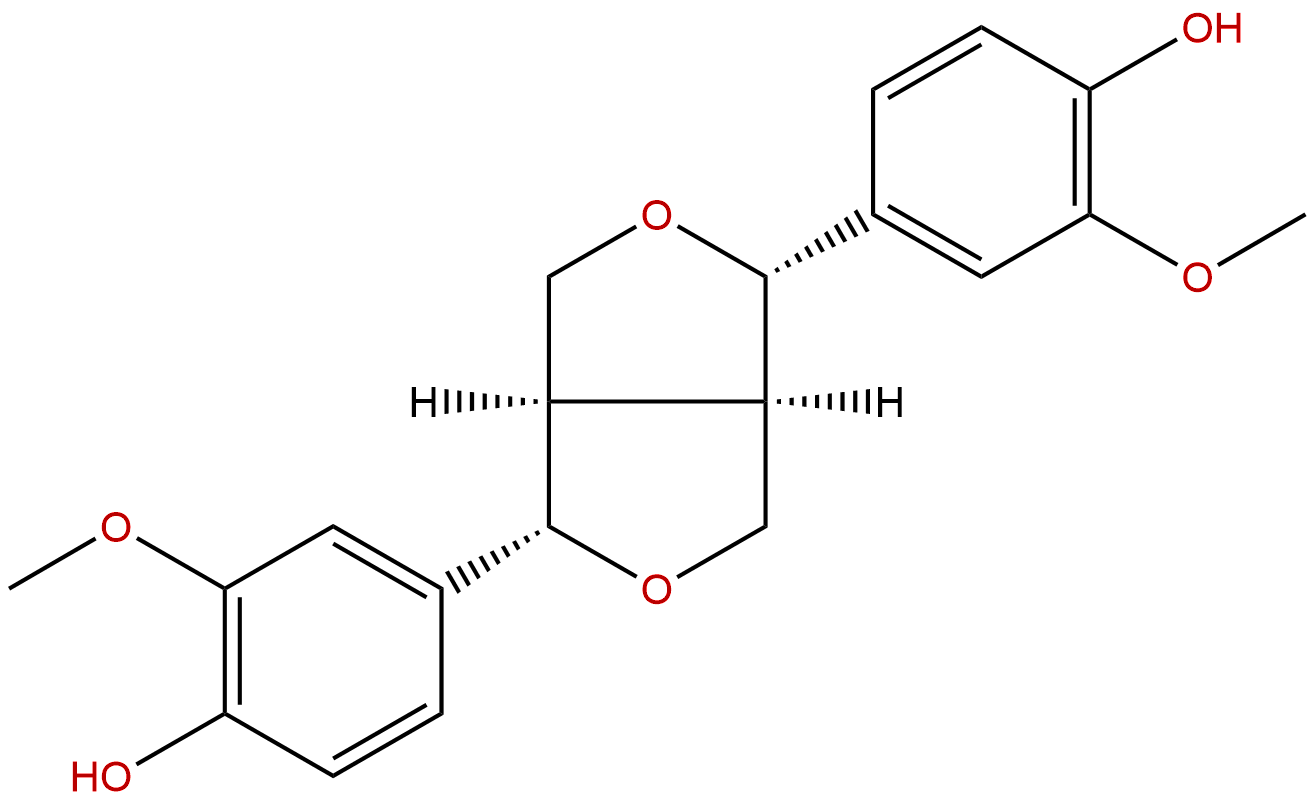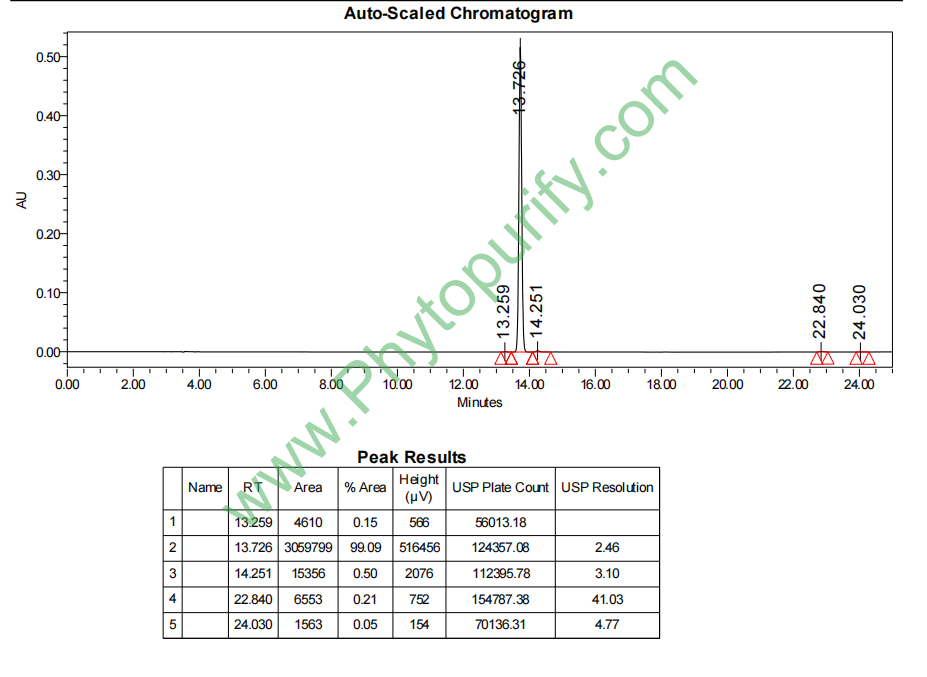
(+)-PinoresinolCAS No.:487-36-5
|
||||||||||
 |
|
|
||||||||

| Catalogue No.: | BP1789 |
| Formula: | C20H22O6 |
| Mol Weight: | 358.39 |
Product name: (+)-Pinoresinol
Synonym name:
Catalogue No.: BP1789
Cas No.: 487-36-5
Formula: C20H22O6
Mol Weight: 358.39
Botanical Source:
Physical Description: Powder
Type of Compound: Lignans
Purity: 95%~99%
Analysis Method: HPLC-DAD or/and HPLC-ELSD
Identification Method: Mass, NMR
Packing: Brown vial or HDPE plastic bottle
Storage: Store in a well closed container, protected from air and light. Put into refrigerate or freeze for long term storage.
Whenever possible, you should prepare and use solutions on the same day. However, if you need to make up stock solutions in advance, we recommend that you store the solution as aliquots in tightly sealed vials at -20℃. Generally, these will be useable for up to two weeks.
The product could be supplied from milligrams to grams, up to kilograms
Inquire for bulk scale.
Descriptions:
Pinoresinol , among plant lignans, has the strongest antiinflammatory properties by acting on the NF-κB signaling pathway in human intestinal Caco-2 cells.[1]
Pinoresinol-Rich Olives has chemopreventive, anticancer and anti-Inflammatory effects.[2]
Pinoresinol, a lignan of wide distribution in plants, is found to occur as a minor component in the defensive secretion produced by glandular hairs of caterpillars of the cabbage butterfly, Pieris rapae, serves for defense in a caterpillar.[3]
Pinoresinol can ameliorate CCl4-induced acute liver injury, and this protection is likely due to anti-oxidative activity and down-regulation of inflammatory mediators through inhibition of NF-kappaB and activating protein 1 (AP-1).[4]
(+)-Pinoresinol possesses fungicidal activities and therapeutic potential as an antifungal agent for the treatment of fungal infectious diseases in humans.[5]
References:
[1] During A, Debouche C, Raas T, et al. J Nut, 2012, 142(10):1798-805.
[2] Ricciardiello L, Boland C R, Romano M, et al. US 20090048187 A1[P]. 2009.
[3] Schroeder F C, Eisner T. P Natl Acad Sci USA, 2006, 103(42):15497-501.
[4] Kim H Y, Kim J K, Choi J H, et al.J Pharmacol Sci, 2010, 112(1):105-12.
[5] Hwang B, Lee J, Liu Q H, et al. Molecules, 2010, 15(5):3507-16.
[6] Lin B, Shuai N. Chinese Journal of Drug Application & Monitoring,2013(03):147-9.
HPLC of (+)-Pinoresinol
